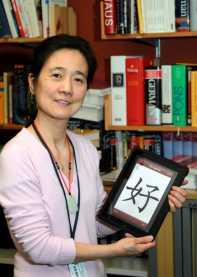Chinese at the tip of your tongue: A glimpse of Chinese
Dr Qian Kan
Chinese scripts date back to about 3,500 years ago. The earliest characters were actually carved onto the turtle shells or bones. They are usually stylised pictures of physical objects composed of vertical, horizontal or curving lines. That’s why they are known as pictographs.
Chinese characters changed many, many times during its evolution. It is believed that the earliest form of the device with two wheels was designed for the purpose of warfare. Let us look at the character for cart or car as an example. Here is the earliest form of the character known as oracle bone script, and then it went through a few other stages, bronze script, running script, cursive script, to the nowadays simplified character, and this has been used since the 1950s, pronounced chē.
There are various systems to transcribe Chinese sounds into Roman alphabet. Pinyin was adopted as the official system in the People’s Republic of China in 1958.
In Mandarin Chinese there are four tones. Each syllable has a definite tone and syllables with different tones mean different things. For example, the character chē, carries the first tone, whereas chĕ with the third tone means to tear. Here are some terms for transport that contain the character chē:
huŏ chē, zi xing chē, gōngòng qichē, chūzū chē, miànbāo chē, sānlún chē, mă chē.
In China roads are very, very busy and you can usually find a mix of these forms of transport sharing the same road.
Dur: 2’45”

Rate and Review
Rate this video
Review this video
Log into OpenLearn to leave reviews and join in the conversation.
Video reviews
Hi Hannah
Yes, these videos are still available, I've just looked at the first two.
Are you having problems with them? Could you email openlearn@open.ac.uk the details of any error message you see, and which browser you are using?
best wishes,
OpenLearn Moderator